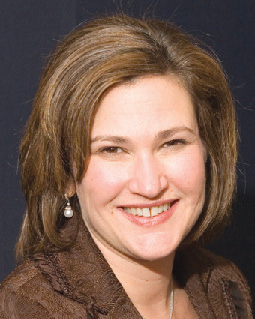With LEED, the USGBC has provided a third-party standard by which companies can measure their design, construction, and operating efficiency. Through the LEED certification process, organizations validate and demonstrate their environmentally friendly process. The green snowball has become an avalanche, and virtually every project begins with some discussion about the LEED process and whether or not certification is practical or desirable.
LEED is exciting for many reasons. For many of us, it has raised environmental and process issues in which we have strongly believed to the forefront with our clients and colleagues. Those of us who have argued to keep value-engineering away from mechanical and electrical systems, where long-term impact on health, comfort, and operational efficiency is truly impacted, no longer have the same struggle to maintain design standards in the context of cost reduction efforts. It is widely recognized that these investments have a real payback in reduced lifecycle costs, and in the health and wellbeing of occupants. We have renewed interest in measuring and quantifying the effect of good design on productivity. Further, the interdependency and collaboration of owner, architect, engineer, and contractor in a successful project process is highlighted and acknowledged as critical when the project is pursuing LEED certification. These relationships become critical and every participant's input is required early on to achieve a LEED project on time and within budget.
LEED is also exciting because for the first time in a long time in many of our careers, we are facing a new horizon which required a retooling of thinking, skills, and practice. There is renewed interest in learning and sharing best practices, because we are all learning together. And we are in a position to show our colleagues how even small changes in operational procedure can make a big difference to the bottom line and to the reduction of our carbon footprint.
In the general contracting field, where building technology has remained largely static over the last few decades, new practices and products are being developed all the time to address sustainable design and construction. LEED forces us all to reach deep into our resource pools and be responsible for educating our workforces, and our subcontractor teams.
But what about projects where the client decides not to pursue LEED certification? LEED certification requires a significant investment in the documentation process. At Elaine, we have at least as many clients who want to incorporate sustainable design elements but make the decision to pass on the certification process as we have those who choose LEED certification. As environmentally friendly elements and practices become easier to incorporate into projects from the outset, many companies are making the decision to incorporate sustainable principles without pursuing the certification. We work closely with all our clients during preconstruction to help them to identify areas of impact where they can utilize LEED principles to improve their spaces, communicate with their employees about their efforts, and ensure the best possible outcome, bringing together the design, construction, and operational policies as the space develops, on paper and then in the field.
And what about areas of potential impact not covered by LEED? For example, LEED covers construction waste management for demolition, but doesn't address many elements where the contractor and subcontractors can make additional impact by taking waste management a step further than LEED and local ordinances dictate. At Elaine, we have added language to all our contracts regarding recycling practices, and require our subcontractors not only to conform with waste management as defined by the LEED process, but also to recycling items like packing and shipping materials, cardboard, and metals. Considering that construction waste accounts for 30% of all waste in the US, 136 million tons annually, practices like these can make a big difference, especially when considered in aggregate and when more and more contractors participate in such programs.
"Repurposing" of materials is also on the rise. The secondary market for furniture has been standard operating procedure for years, but items like lights, doors, and hardware have continued to end up as waste. Organizations like GreenGoat are helping general contractors to salvage materials for use in other projects. Appropriate recycling measures are a great thing, but even better is the potential to reuse construction materials rather than manufacturing additional materials. In its infancy as a trend, Elaine is working closely with GreenGoat, and with our clients and their design teams, to identify materials that can be reused in current or future projects.
The potential business impacts are just now becoming clearer. As we work together to incorporate, improve, and build upon sustainable practice in the design and construction fields, we all have the opportunity to improve the bottom line through new techniques and new lines of service, while doing the right thing for the environment. As we acknowledge that we can no longer continue to treat our resources as limitless, we can also be confident that doing the right thing makes good business sense.
Lori Coletti is director of client services at Elaine Construction Co., Newton Upper Falls, Mass.
Tags:







